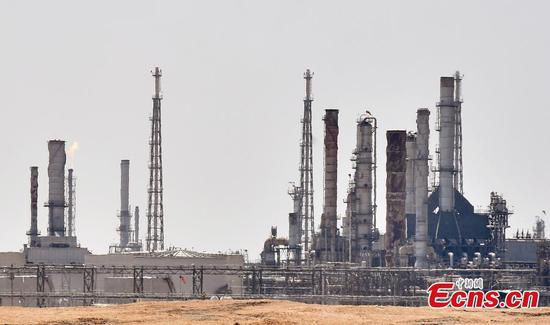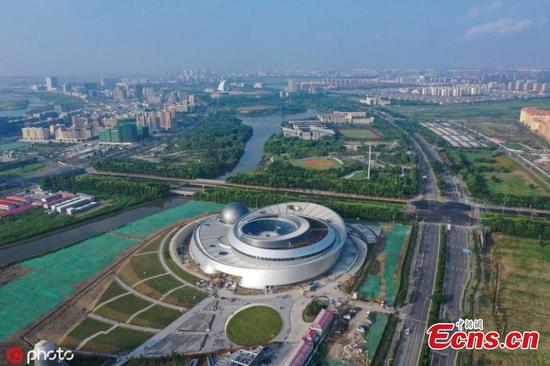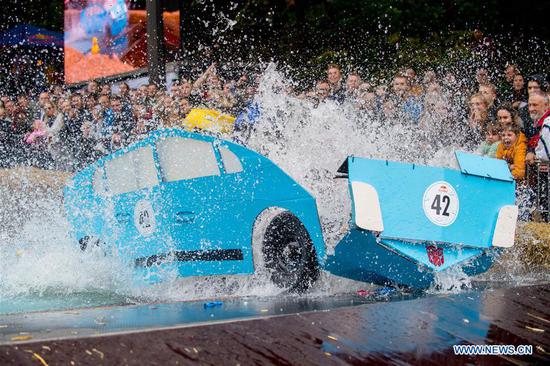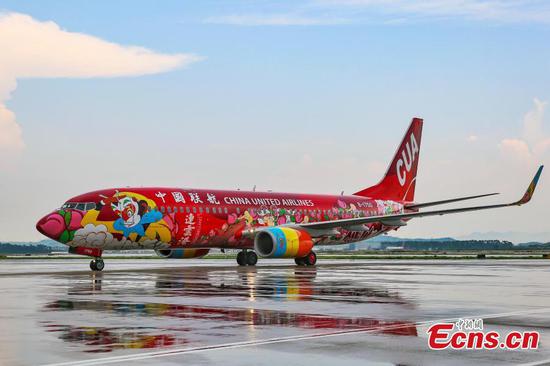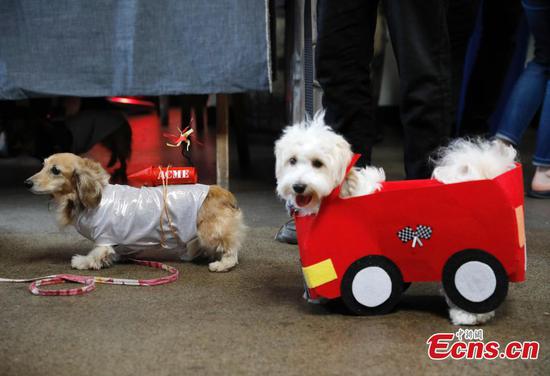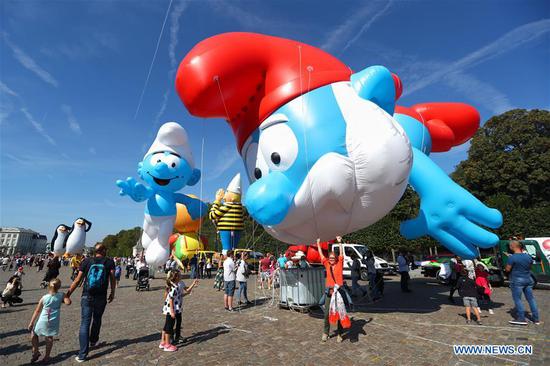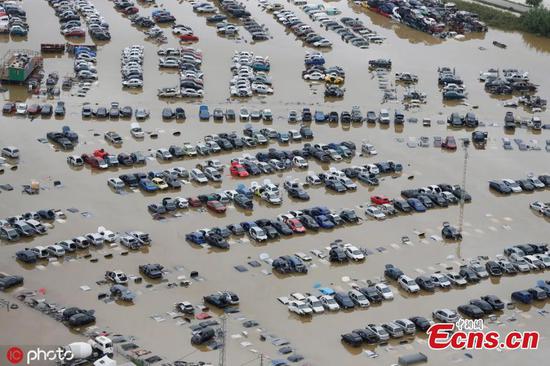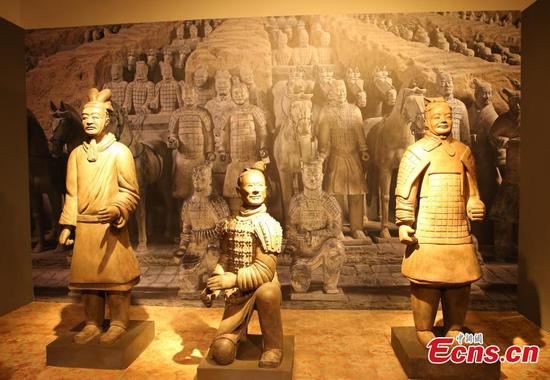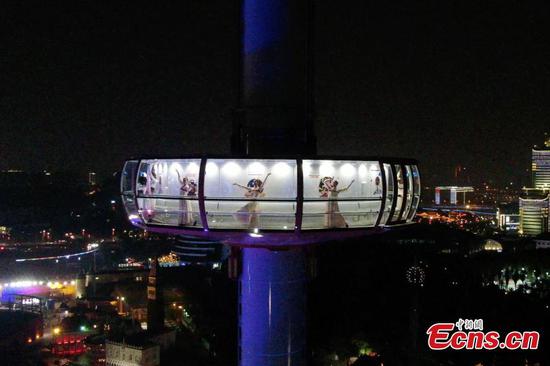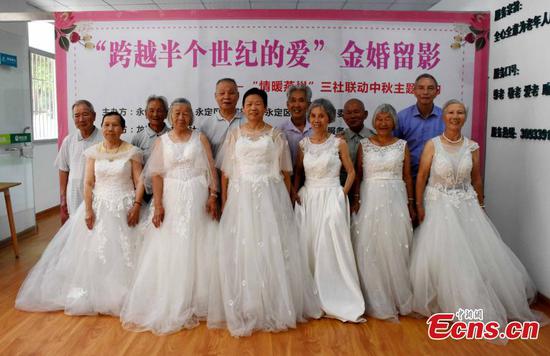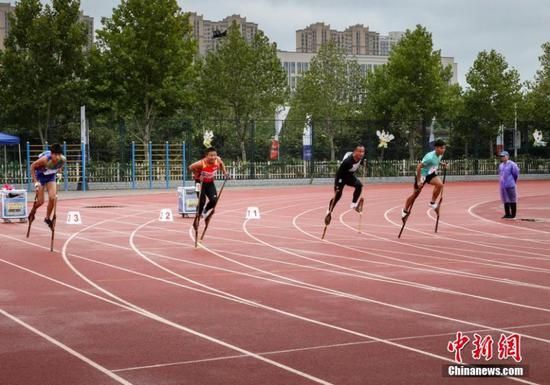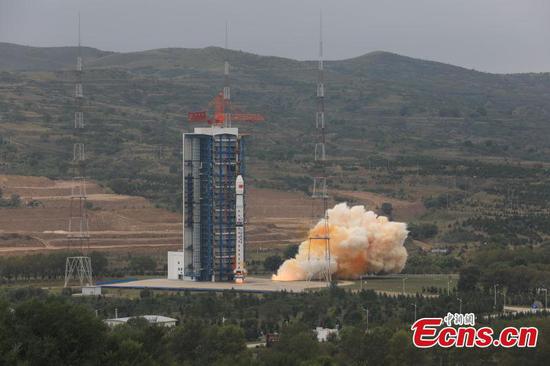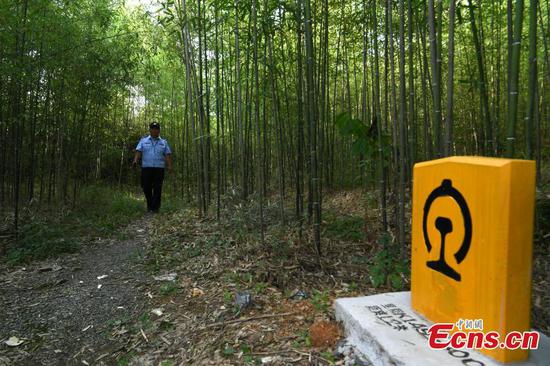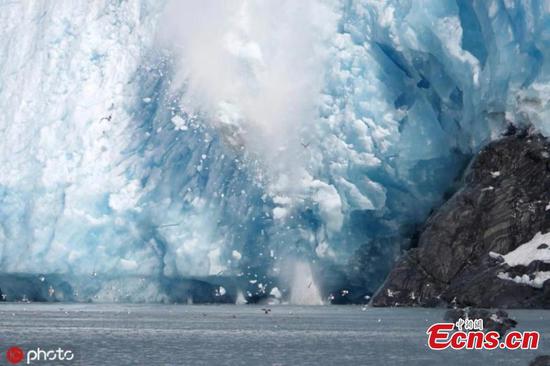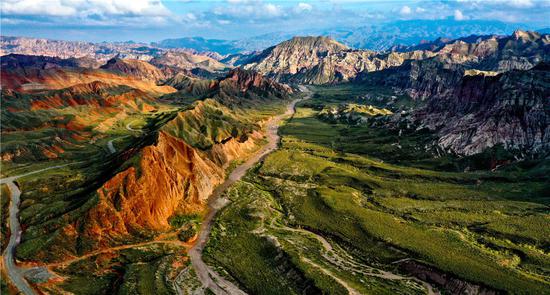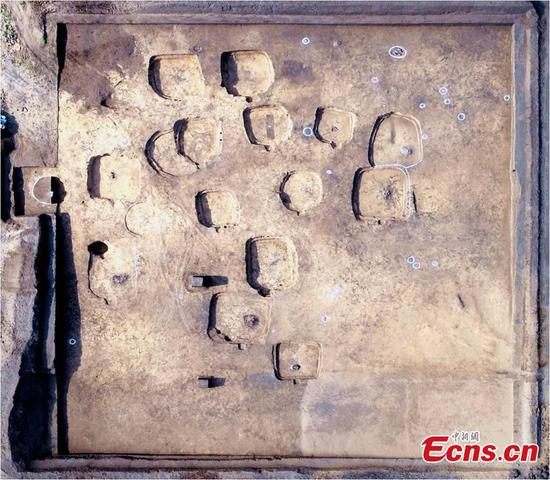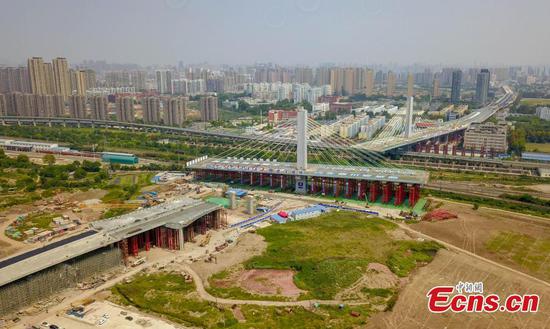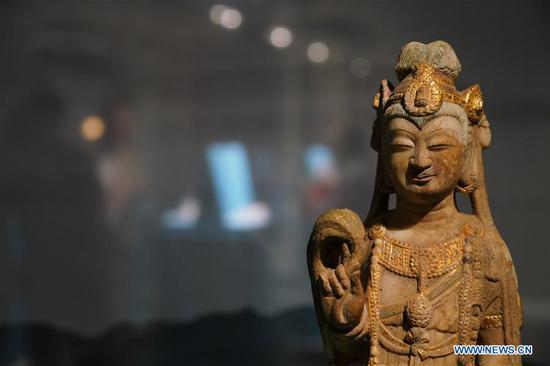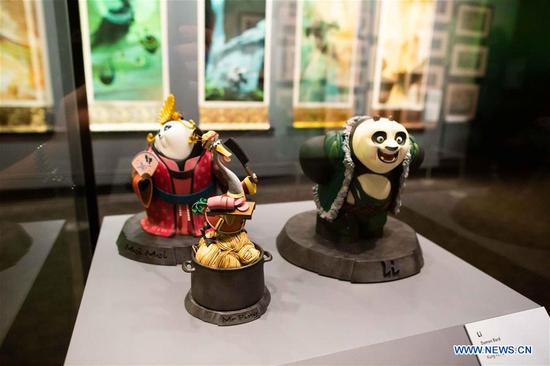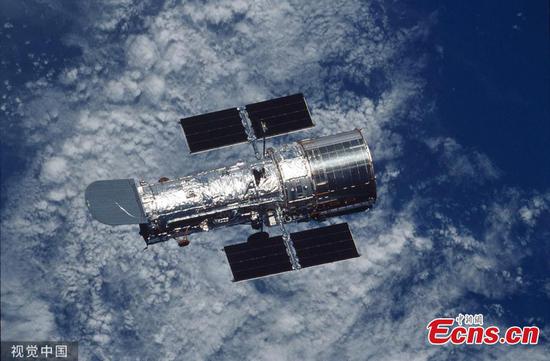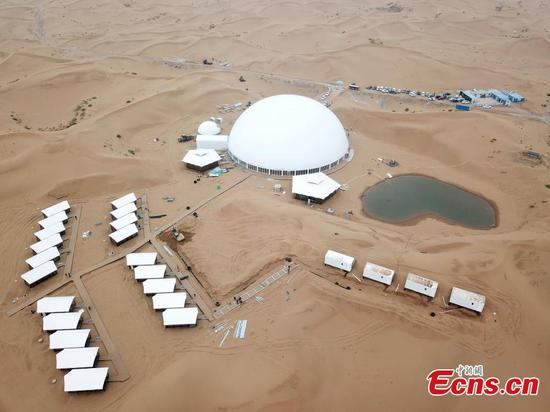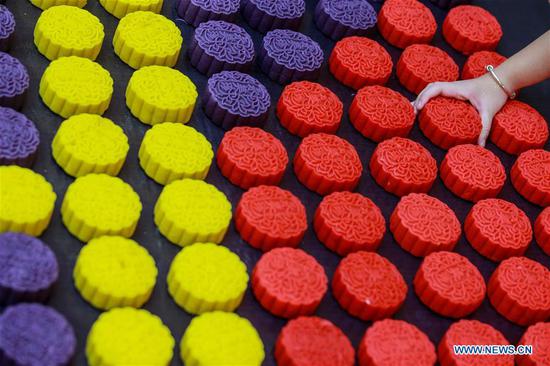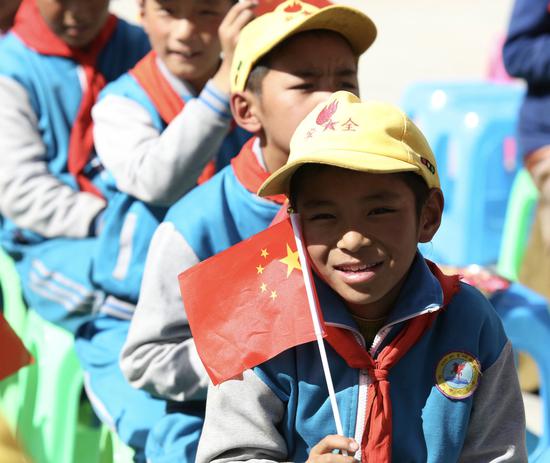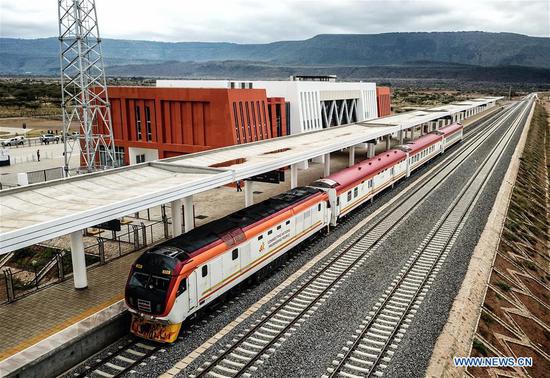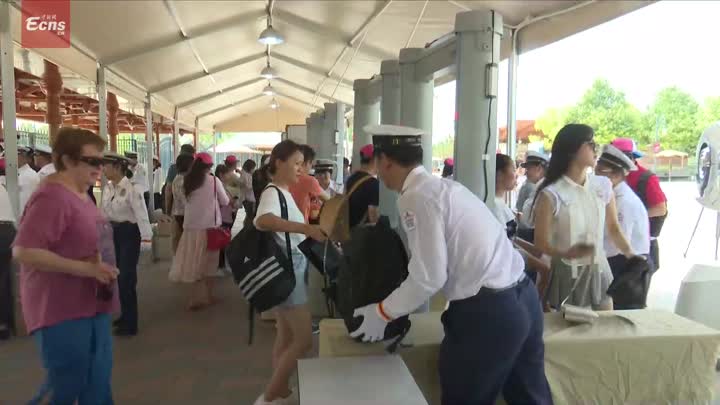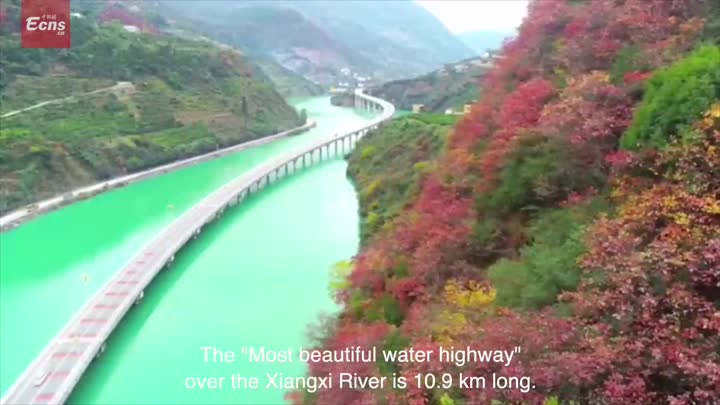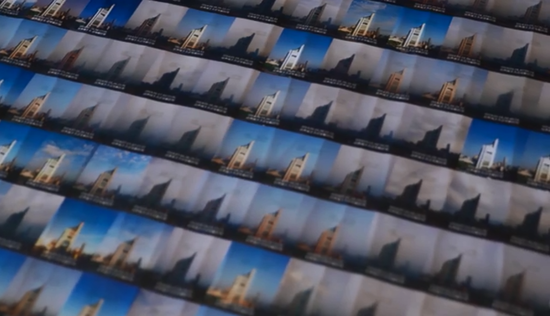
The photo collection titled "Leaping to the Eye" done by Beijing resident Zou Yi since January 27, 2013 to record the air quality of Beijing, China.(CGTN Photo)
Efforts paid off
By using image recognition technology, Zou and his team extracted PM 2.5 concentration data from the pictures. The data showed that from 2013 to 2018, the concentration of PM 2.5 in Beijing dropped significantly by over 30 percent. It was consistent with the data released by the Beijing Municipal Ecological Environment Bureau.
"This is pretty remarkable since Beijing maintained a medium-to-high speed economic growth during this period. The climate conditions have become unfavorable in decades," noted He Kebin, professor with the Department of Air Pollution Control at the Tsinghua University.
"Industrialization leads to urbanization, which itself brings about motorization. This process creates what we called 'combined air pollution.' The leading source of combined air pollution is PM 2.5 followed by ozone. Since 2015, Beijing has largely contained the amount of ozone, and this is not an easy task," He continued.
In the past two decades, Beijing has created a high-intensity monitoring network in its fight against air pollution. It has also strengthened the collaboration with its surrounding areas and identified Beijing, Tianjin as well as 26 other affected cities on the air pollution transmission route. The city has also cut down coal-based pollution, reducing coal burning from 28 million tons in 1998 to some 2 million tons today. In addition, stricter measures to reduce automobile-related pollution have been introduced to the Chinese capital, which is home to over 21 million people.
"Beijing has done a lot to promote green vehicles. As far as I know, for example, the 2022 Winter Olympics would be a great opportunity to do so. Green vehicles represent the future of automobiles," he said.
At the same time, Beijing has made great efforts in developing green transport. By controlling the number of cars through a license-plate lottery system, improving gas quality, and limiting the number of vehicles on the road, Beijing has remarkably improved its air quality.
"Compared to 2013, the changes in air quality are unprecedented. There are more and more days meeting official air quality standards, with PM 2.5 levels witnessing a significant decline," Zou echoed.
In March 2019, in its Review of 20 Year's Air Pollution Control in Beijing, the United Nations praised Beijing for its work in improving air quality, saying that it provides valuable lessons for other cities around the world.
"All the experiences and knowledge that China is employing to great effects internally, and bringing more and more knowledge, and giving it to the rest of the world to help speed climate air pollution mitigation," Nathan Borgford-Parnell, UNEP Climate and Clean Alliance, told CGTN.









